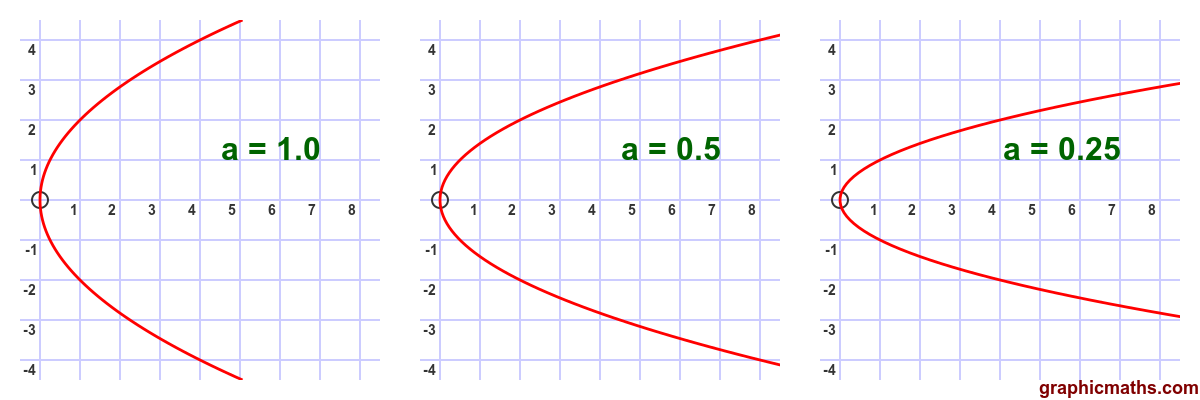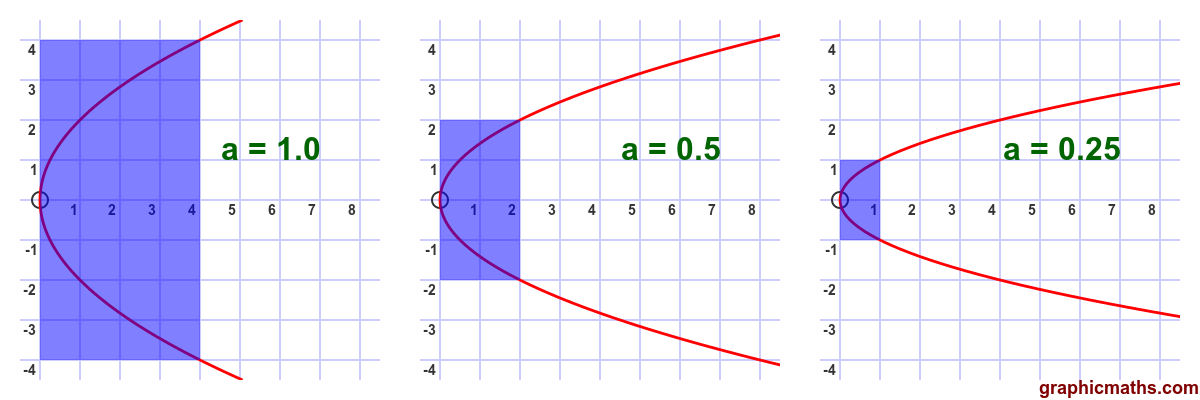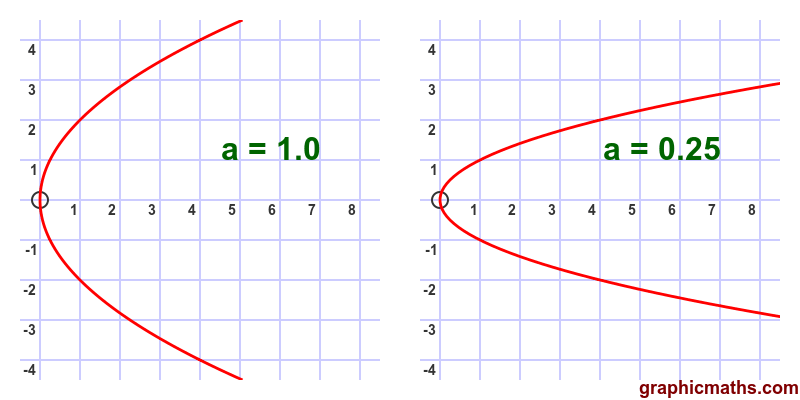Parabolas - effect of parameter 'a'
Categories: coordinate systems pure mathematics

This section looks at the effect of changing the parameter $a$ in the Cartesian equation of the parabola $y^2 = 4 a x$.
Here is the same parabola, plotted with different values of $a$:

Changing the value of $a$ moves the position of the focus and the directrix, which in turn changes the curve. The smaller the value of $a$, the closer the focus and directrix are to the origin.
All parabolas are the same shape
An interesting fact about parabolas is that they are all similar (ie the same shape). Making $a$ smaller makes the entire parabola smaller, but doesn't change its shape. Other curves have the same property, for example all circles are the same shape - changing the radius makes a different sized circle, but doesn't change its shape.
This shouldn't really be a surprise. When we make $a$ smaller, we move the focus and directrix closer together, but we then draw the parabola in exactly the same way, so of course we just end up with a smaller parabola of the exact same shape.
But that may not be entirely obvious from looking at the image above - as $a$ get smaller the parabola appears to be narrower and more pointed. That is simply because you can see more of the shape. In this diagram, the blue shaded rectangle shows the equivalent portion of the curve for each value of $a$. If you look closely you will see that they are identical shapes:

As a further illustration, in this animation we draw two parabolas, with $a = 1$ and $a = 0.25$, and zoom in on the smaller parabola until they are both the same size:

See also

Join the GraphicMaths Newletter
Sign up using this form to receive an email when new content is added:
Popular tags
adder adjacency matrix alu and gate angle answers area argand diagram binary maths cartesian equation chain rule chord circle cofactor combinations complex modulus complex polygon complex power complex root cosh cosine cosine rule countable cpu cube decagon demorgans law derivative determinant diagonal directrix dodecagon eigenvalue eigenvector ellipse equilateral triangle euler eulers formula exercises exponent exponential exterior angle first principles flip-flop focus gabriels horn gradient graph hendecagon heptagon hexagon horizontal hyperbola hyperbolic function hyperbolic functions infinity integration by parts integration by substitution interior angle inverse hyperbolic function inverse matrix irrational irregular polygon isosceles trapezium isosceles triangle kite koch curve l system line integral locus logarithm maclaurin series major axis matrix matrix algebra mean minor axis n choose r nand gate net newton raphson method nonagon nor gate normal normal distribution not gate octagon or gate parabola parallelogram parametric equation pentagon perimeter permutations polar coordinates polynomial power probability probability distribution product rule proof pythagoras proof quadrilateral questions radians radius rectangle regular polygon rhombus root sech segment set set-reset flip-flop sine sine rule sinh sloping lines solving equations solving triangles square square root standard curves standard deviation star polygon statistics straight line graphs surface of revolution symmetry tangent tanh transformation transformations trapezium triangle turtle graphics uncountable variance vertical volume volume of revolution xnor gate xor gate